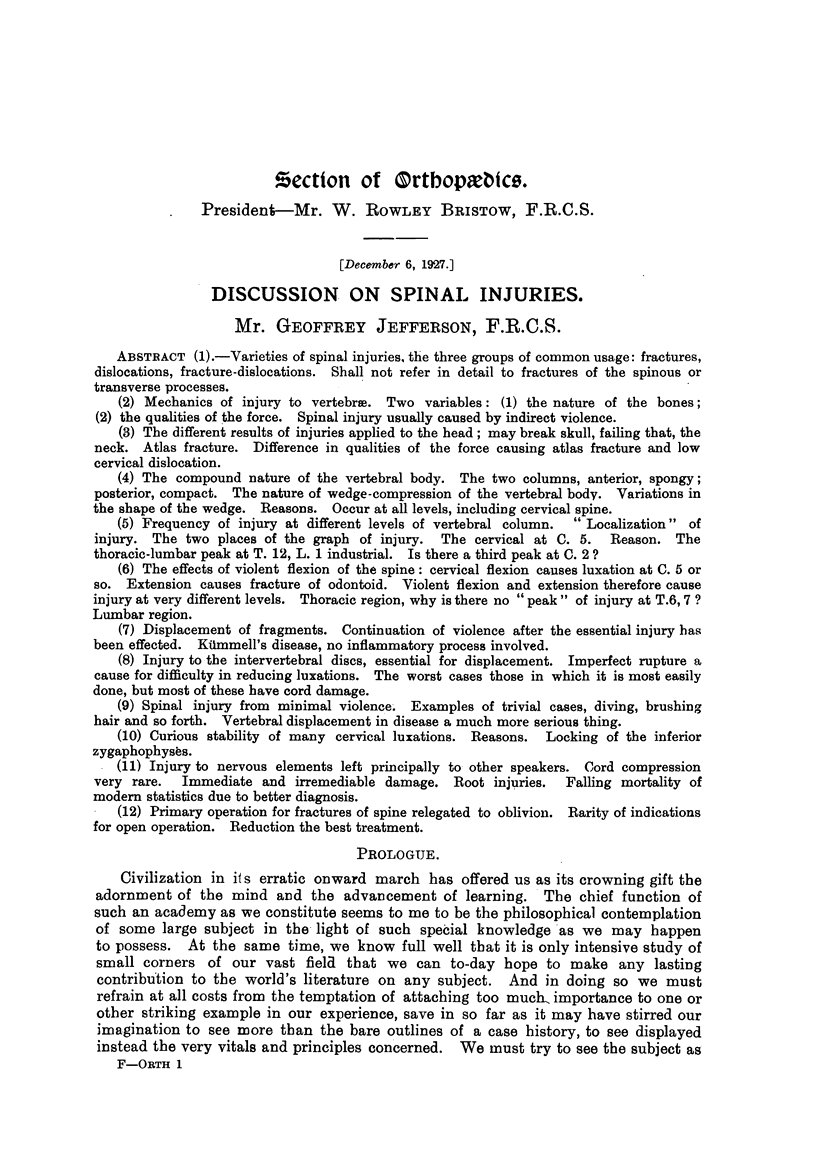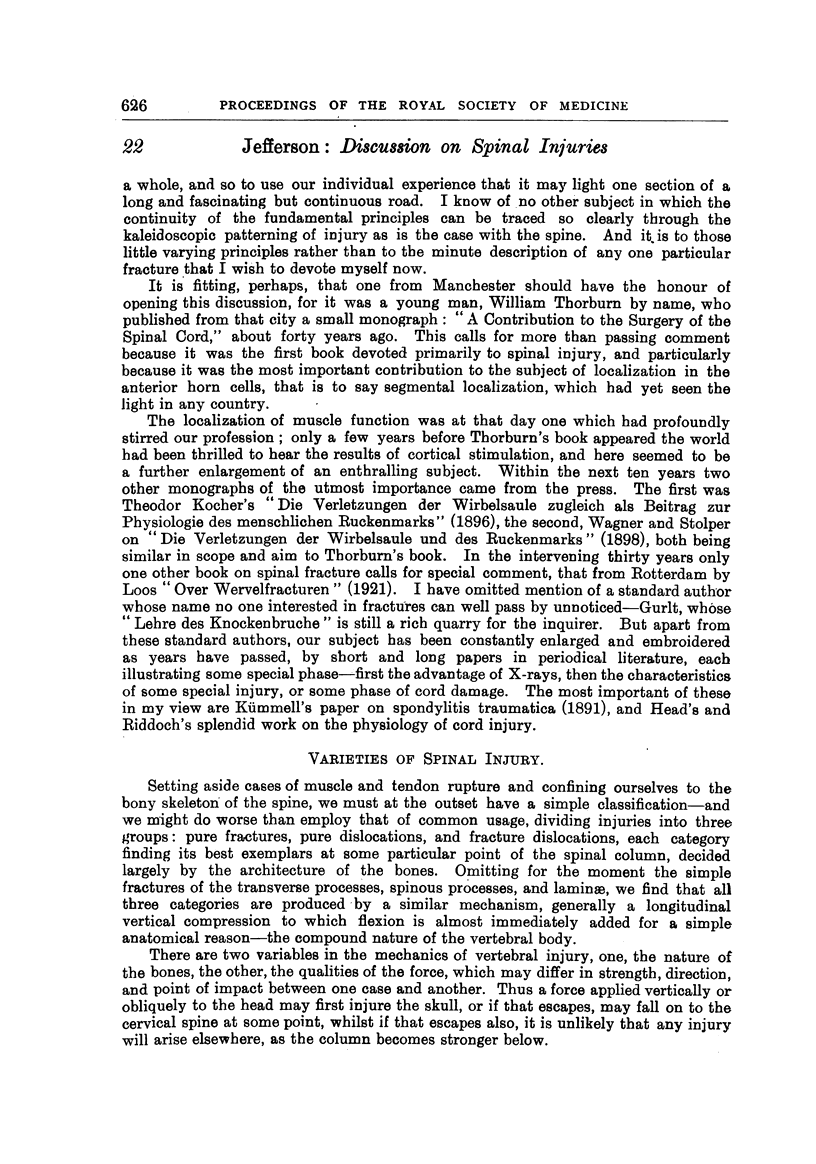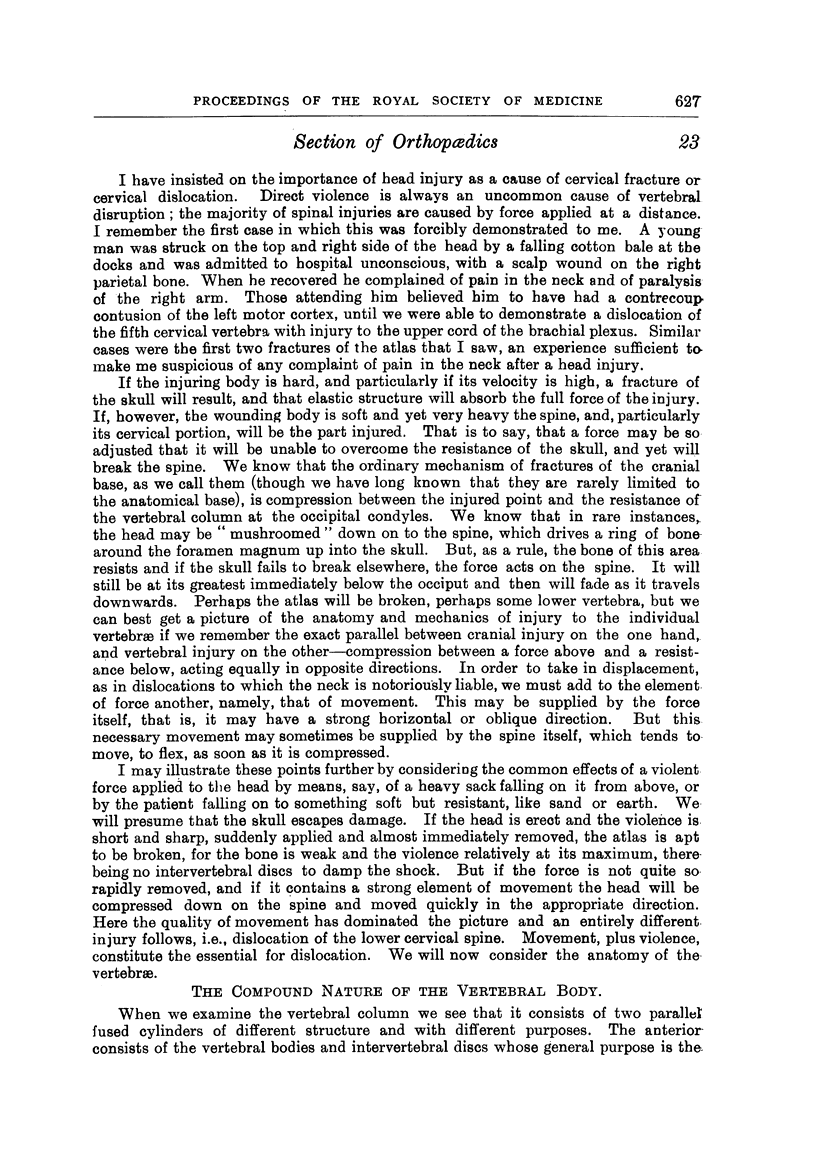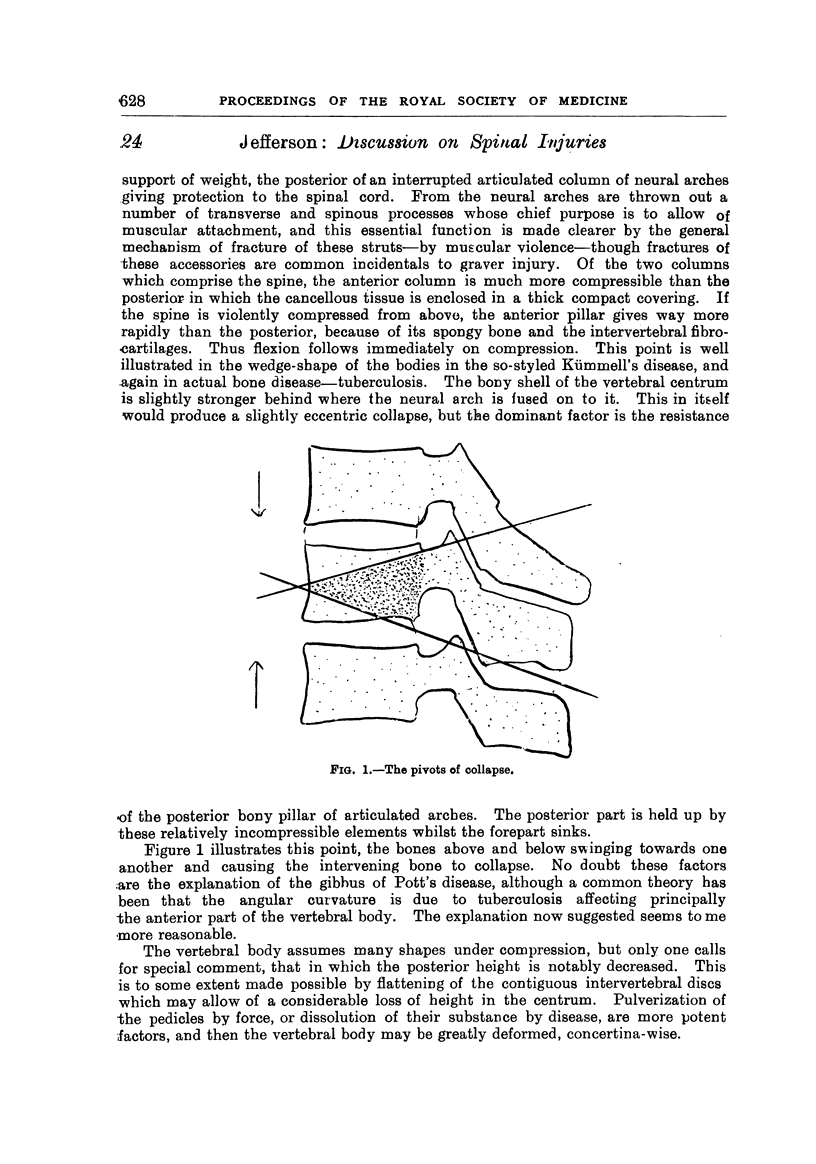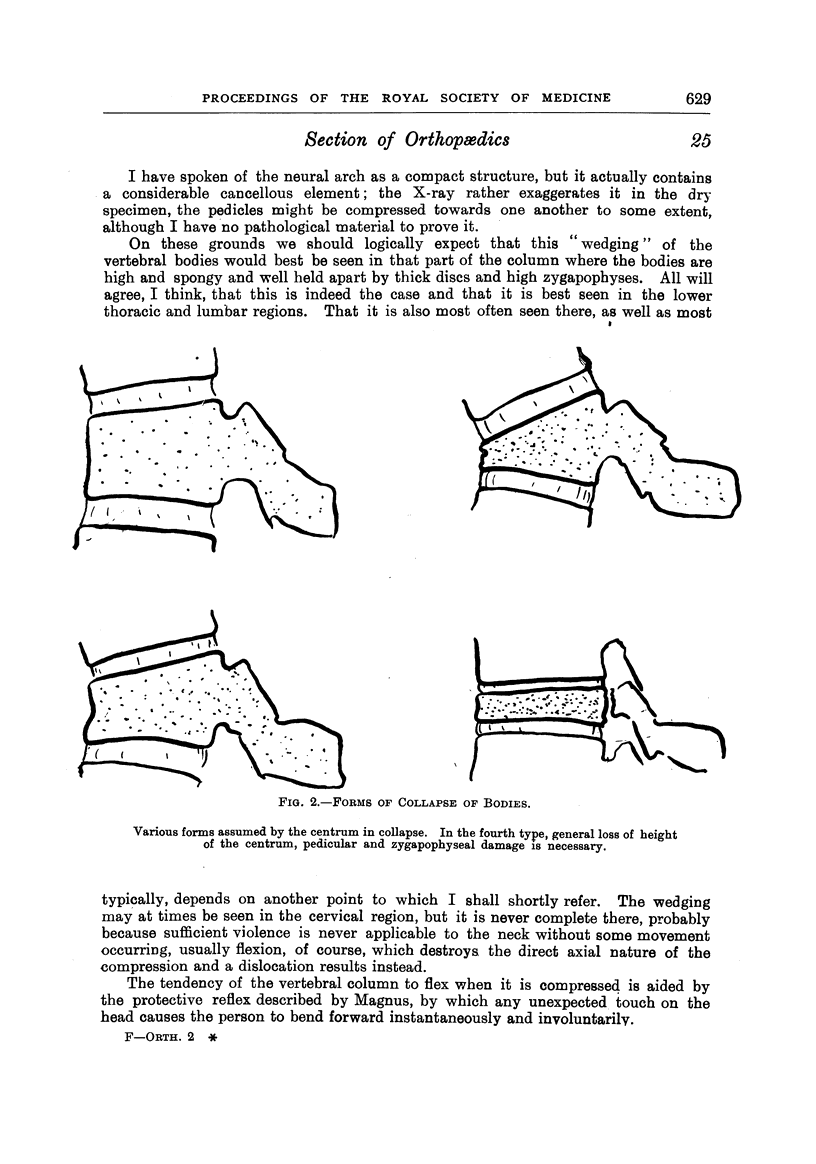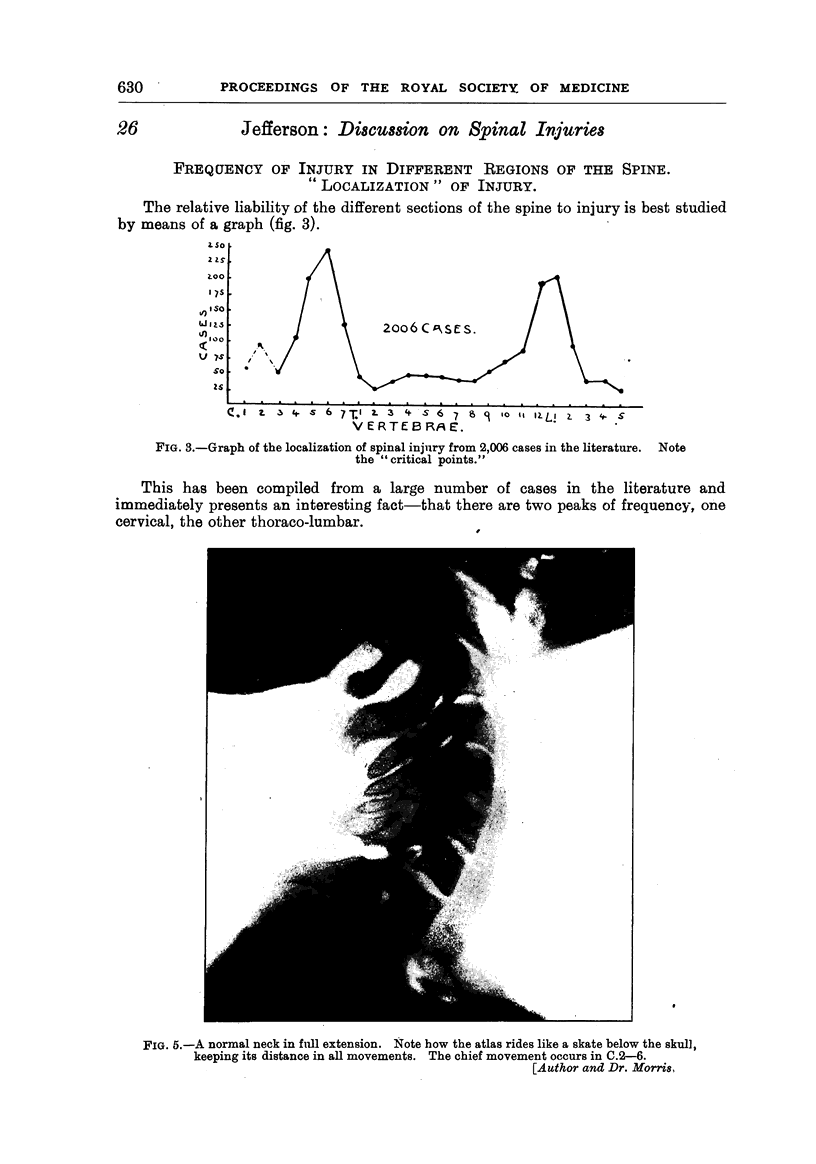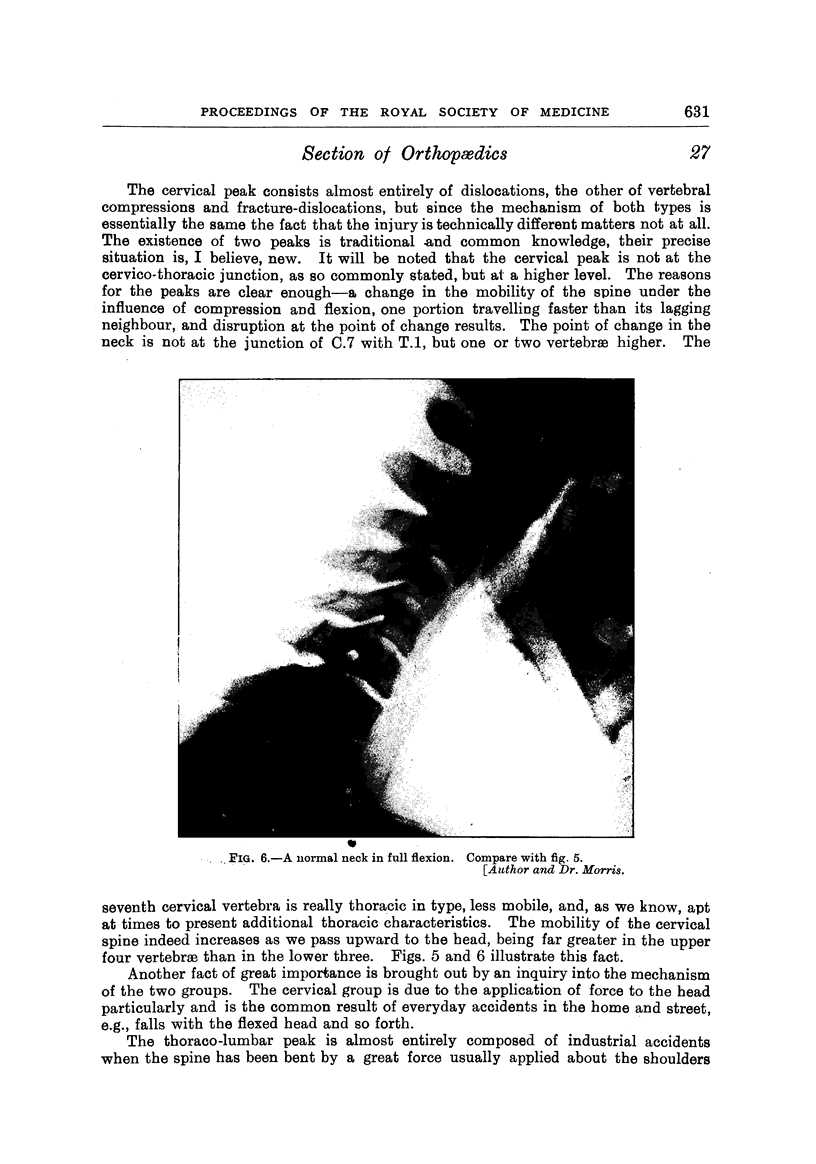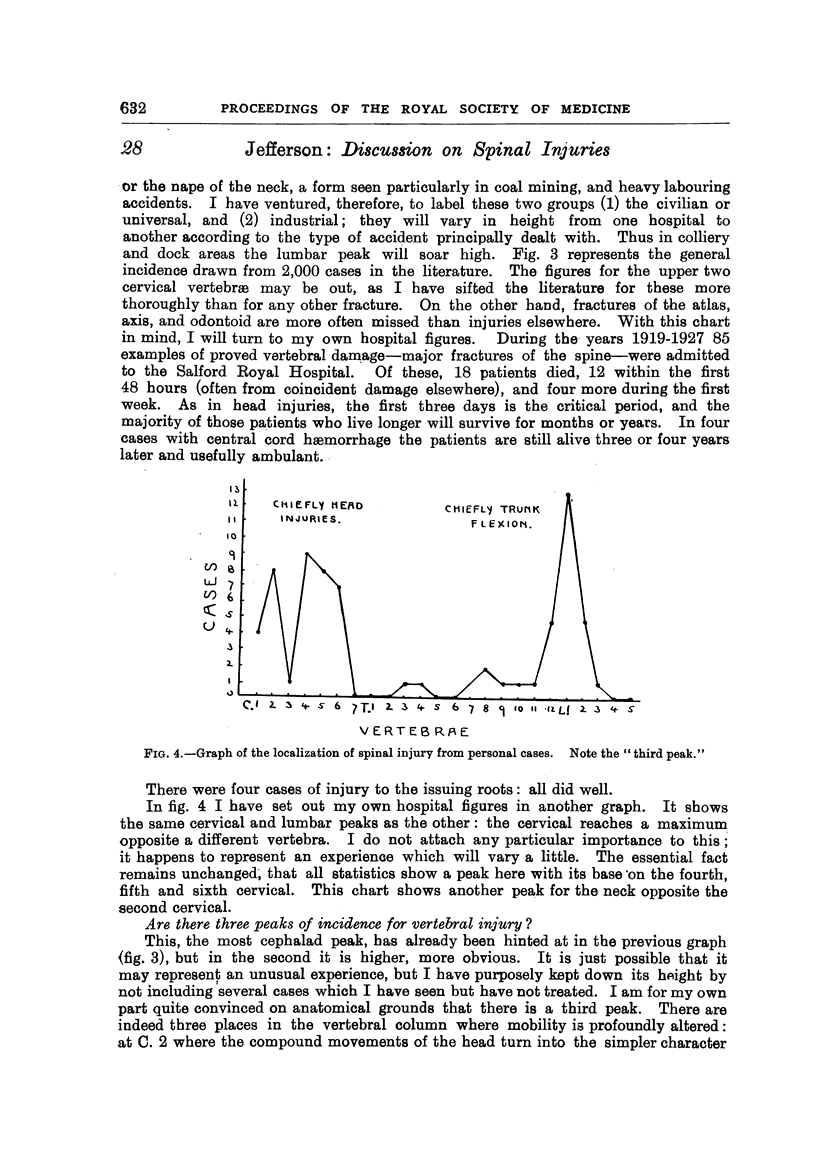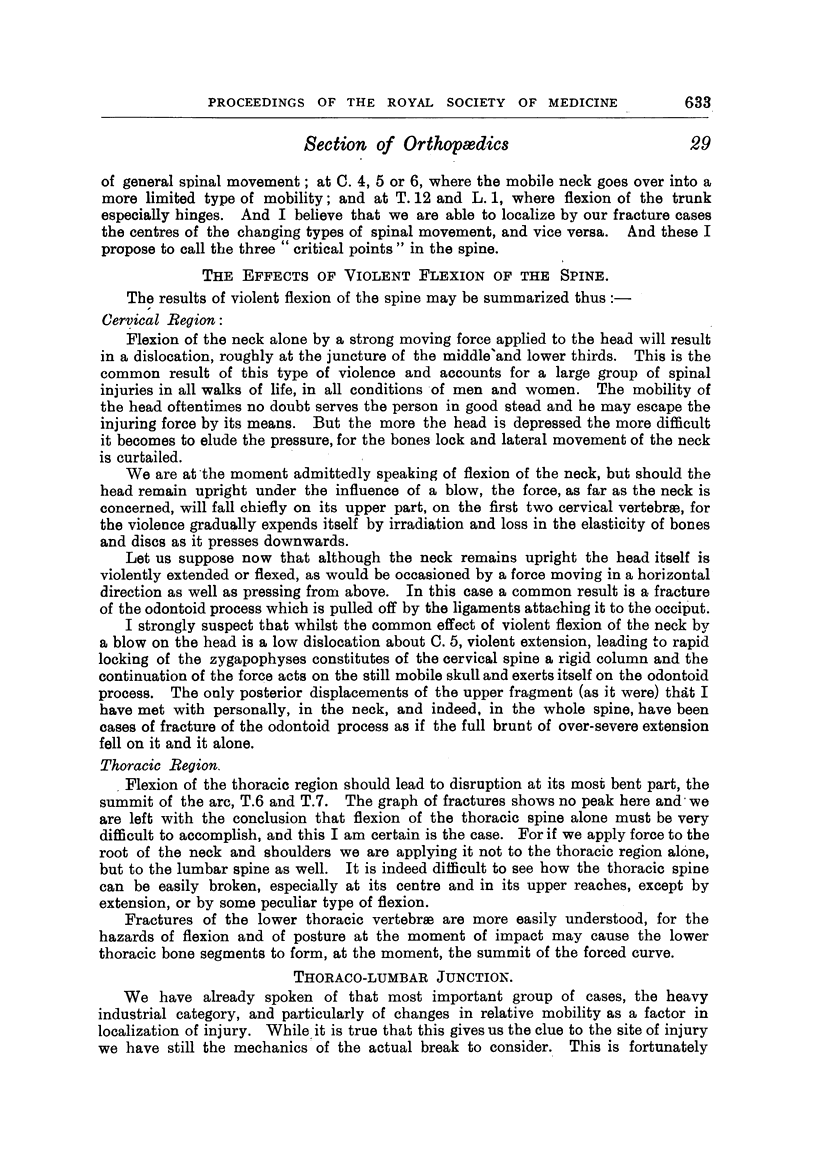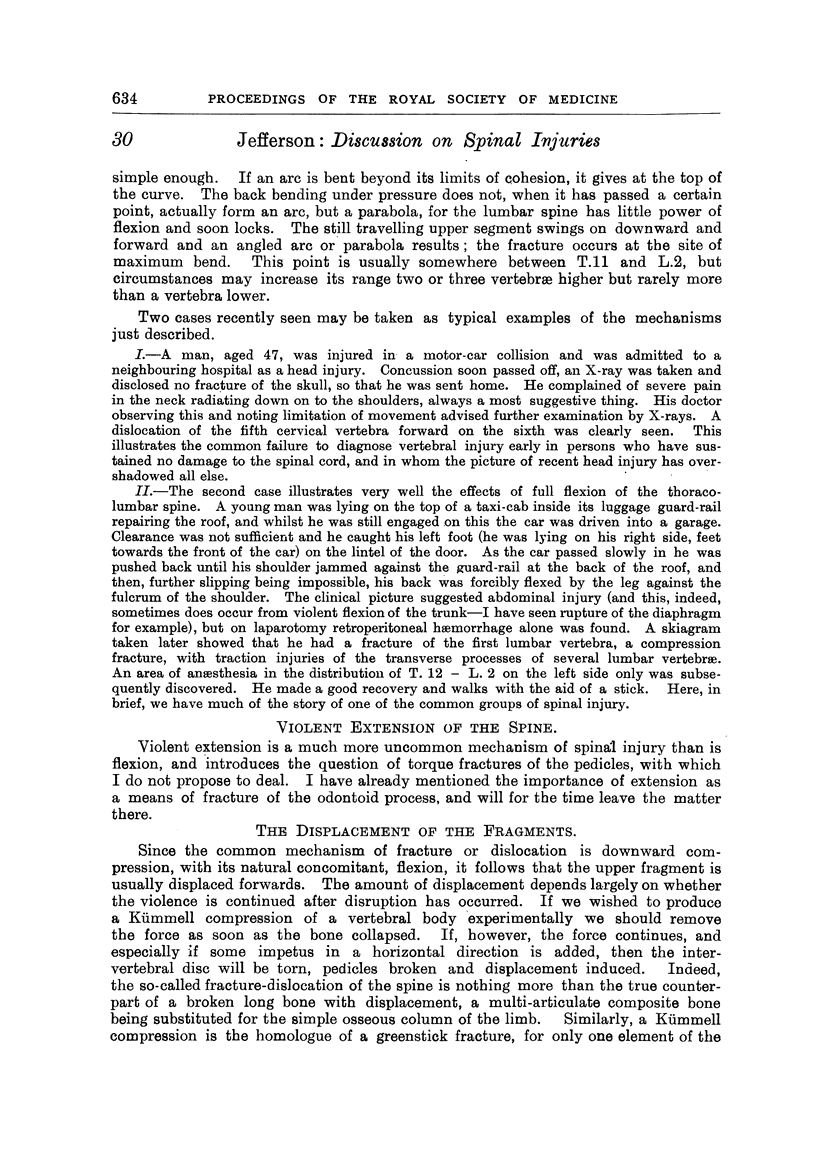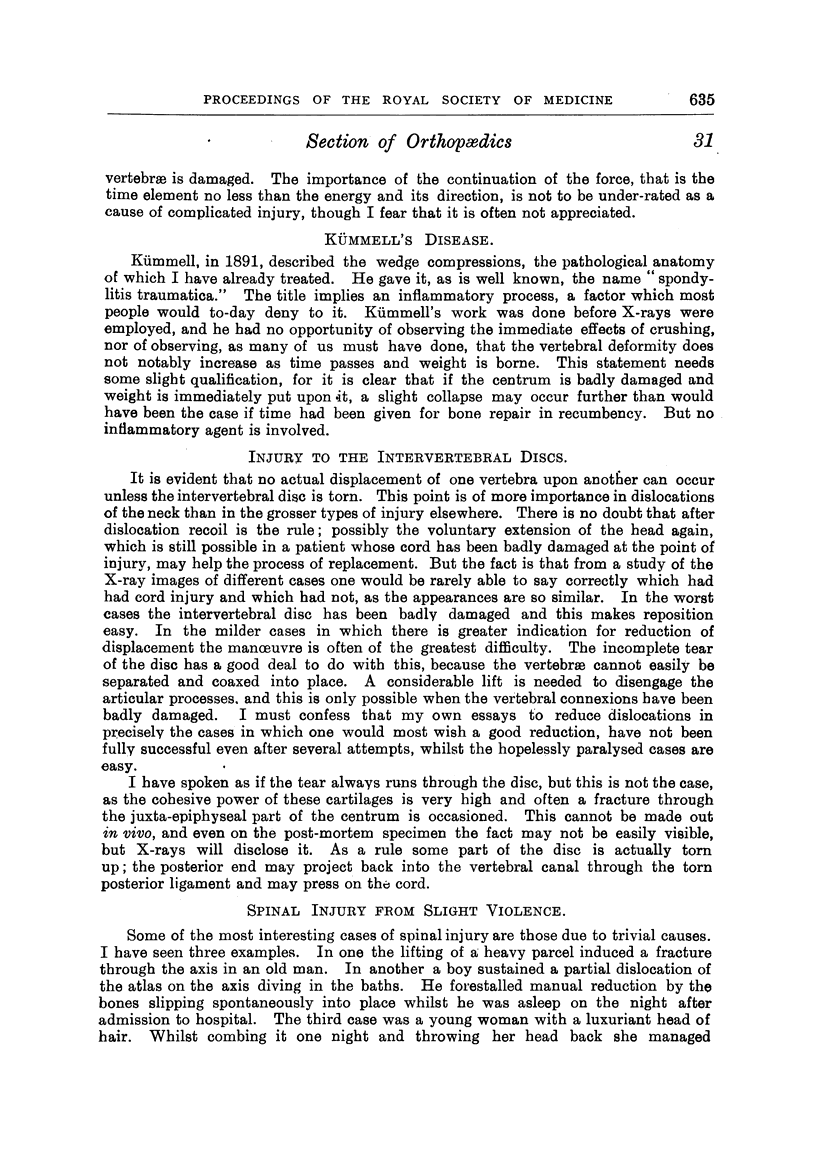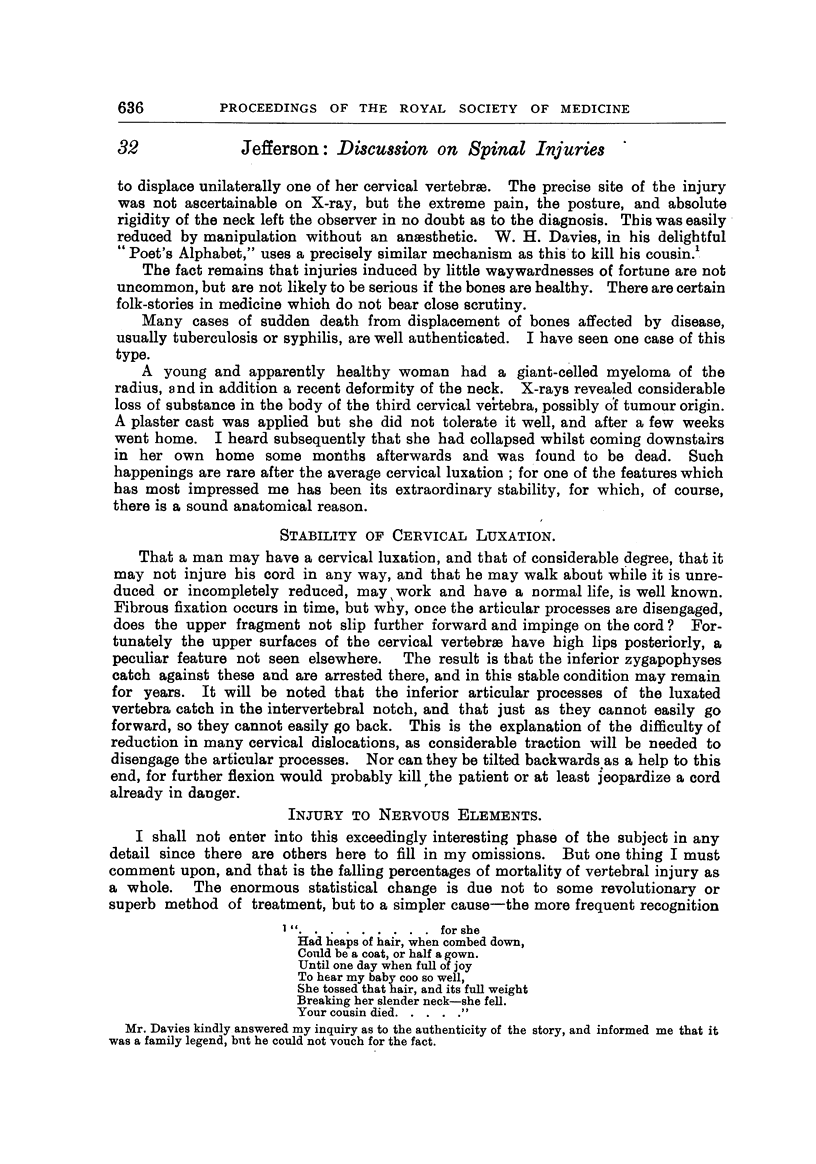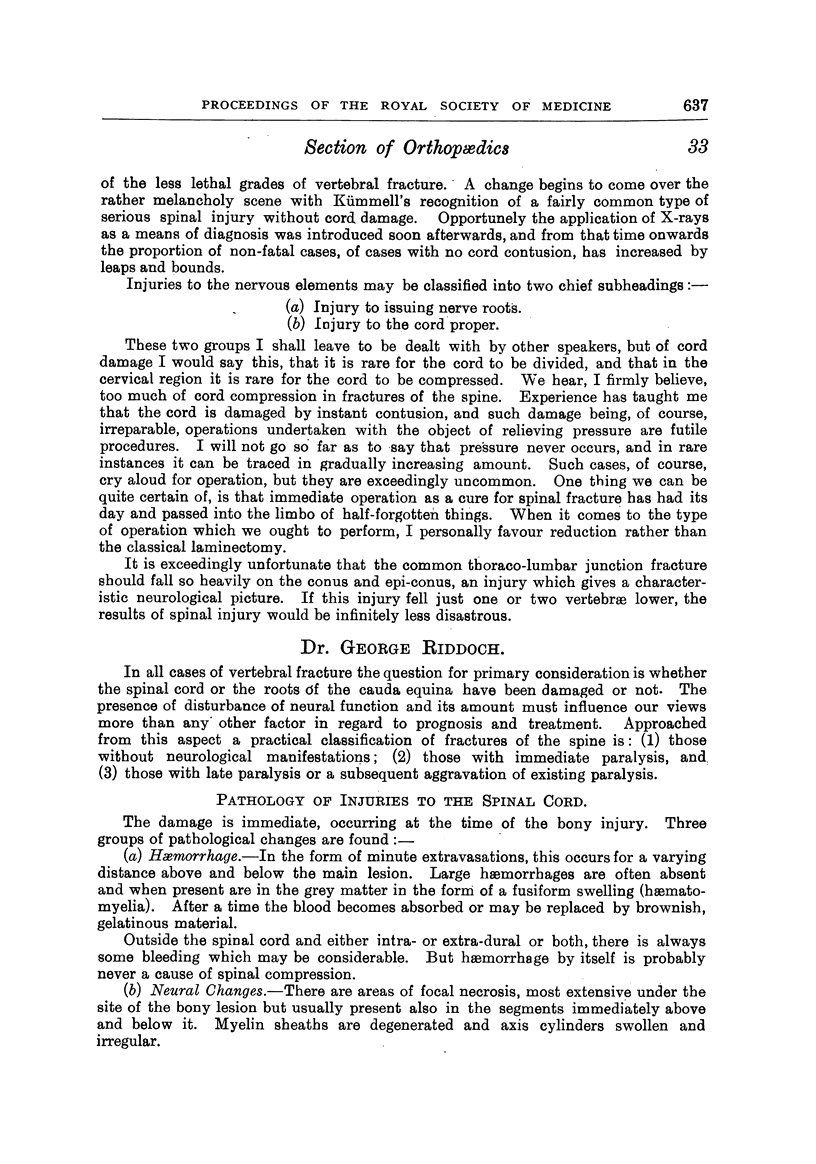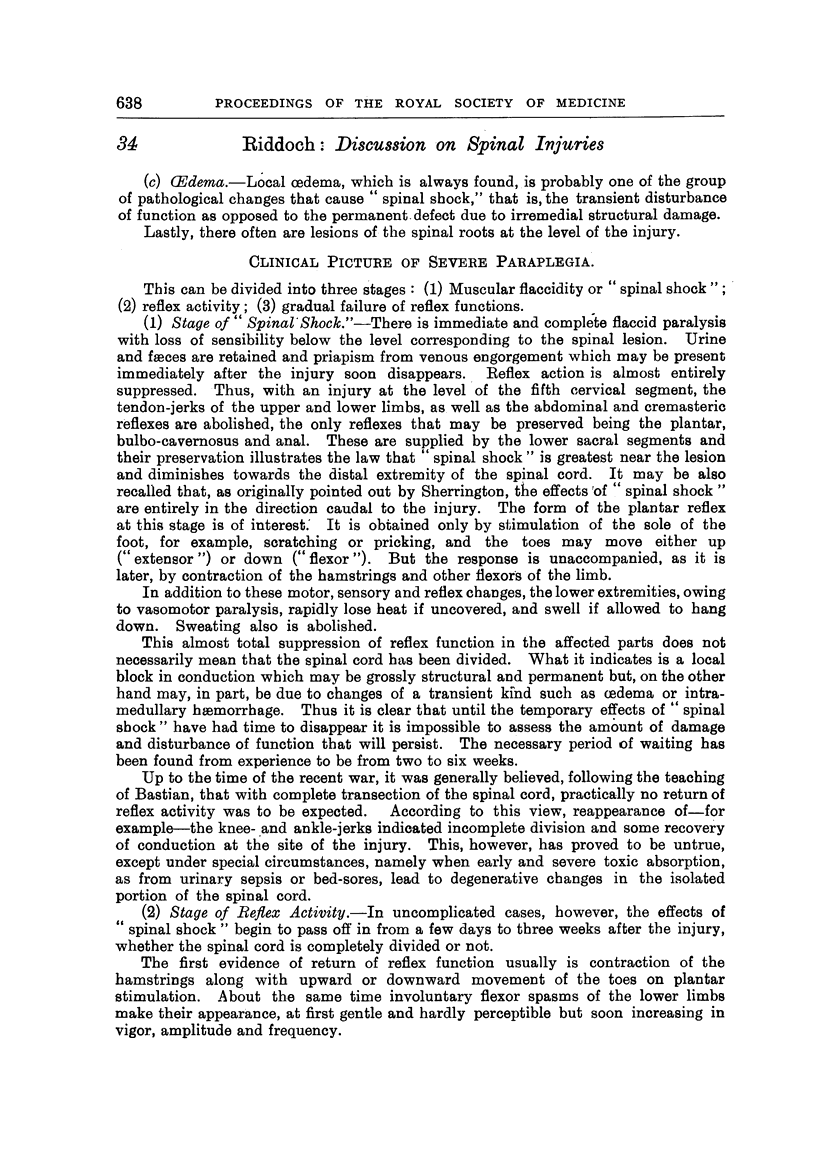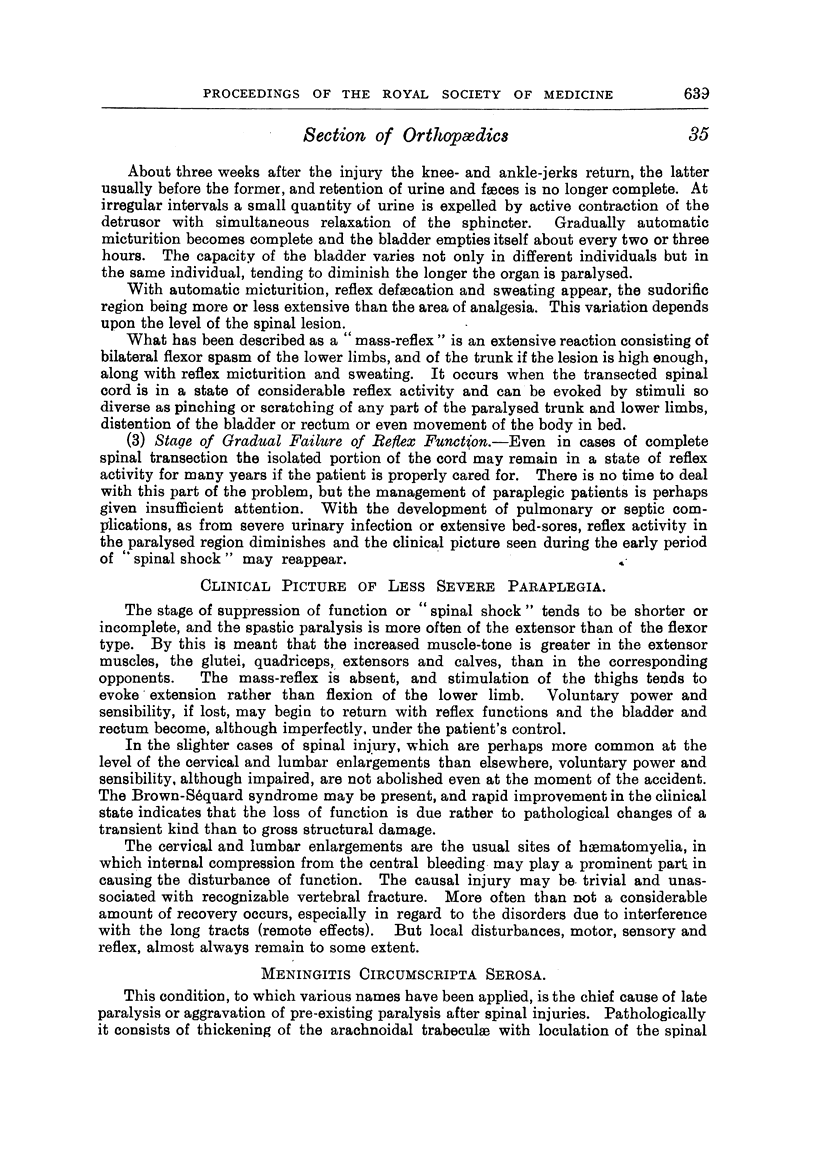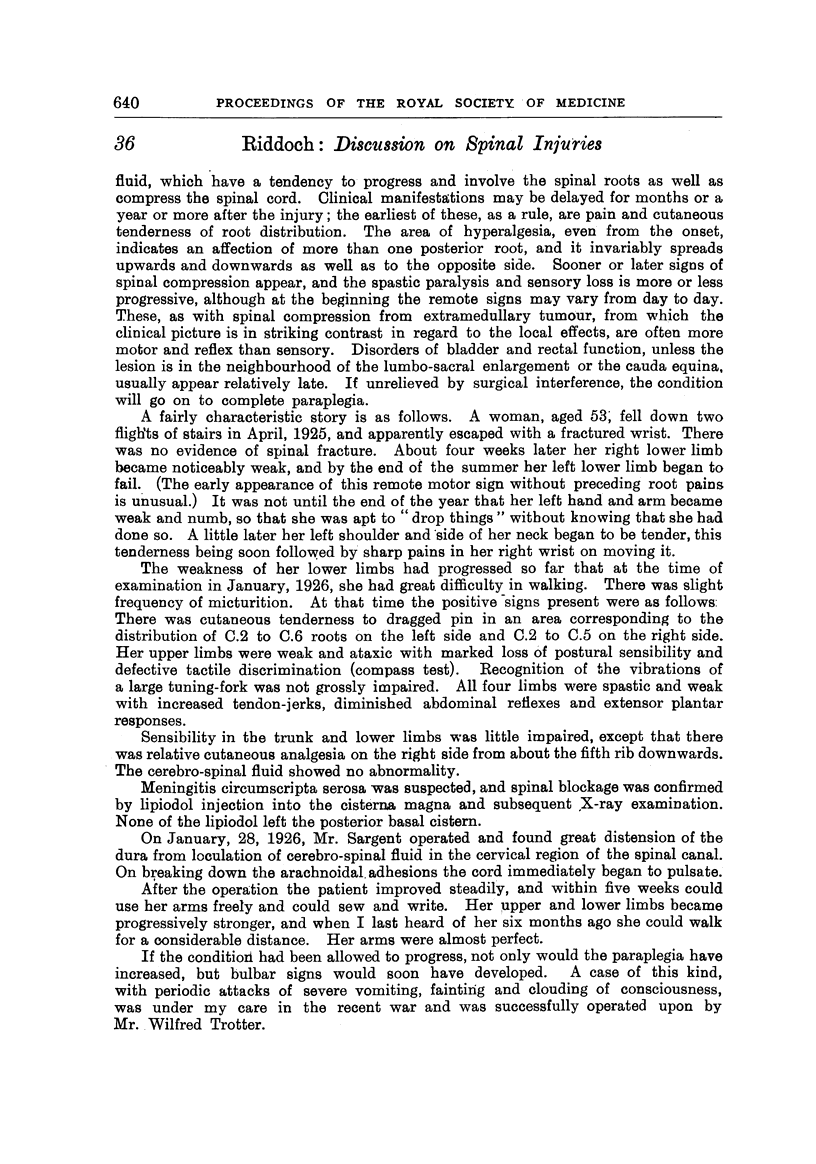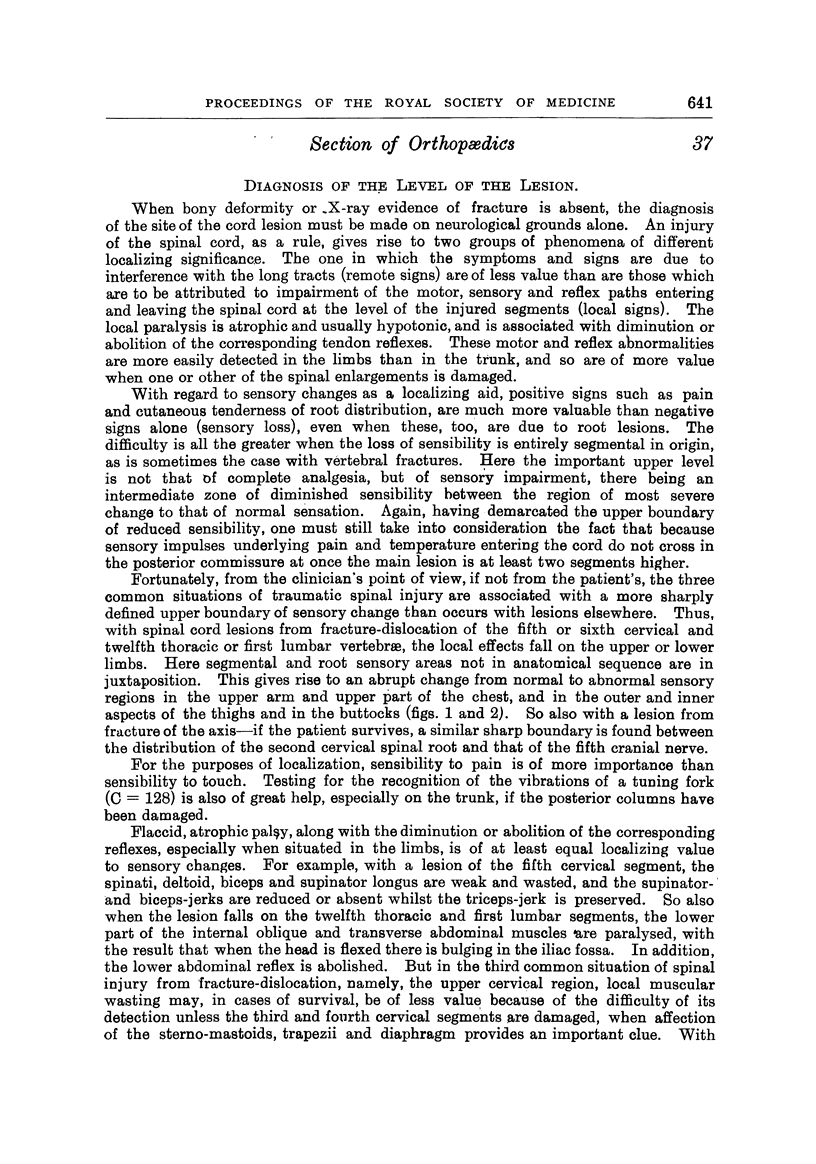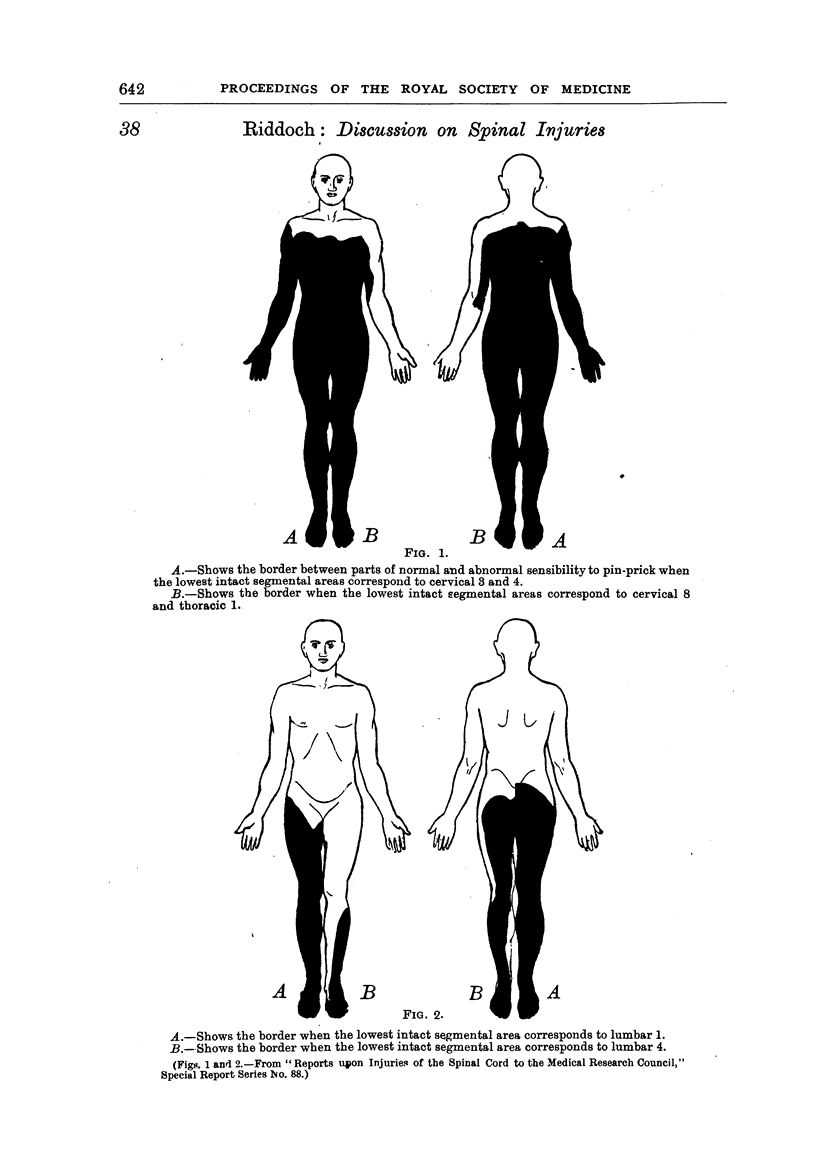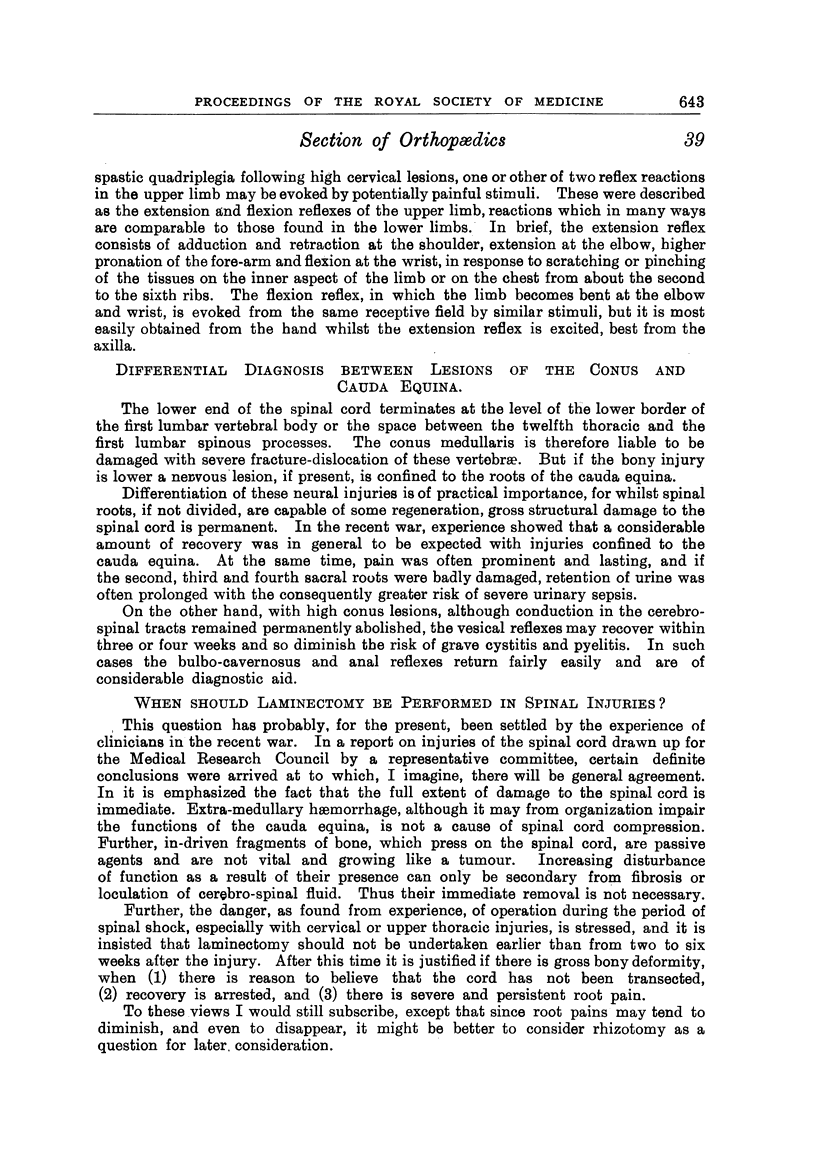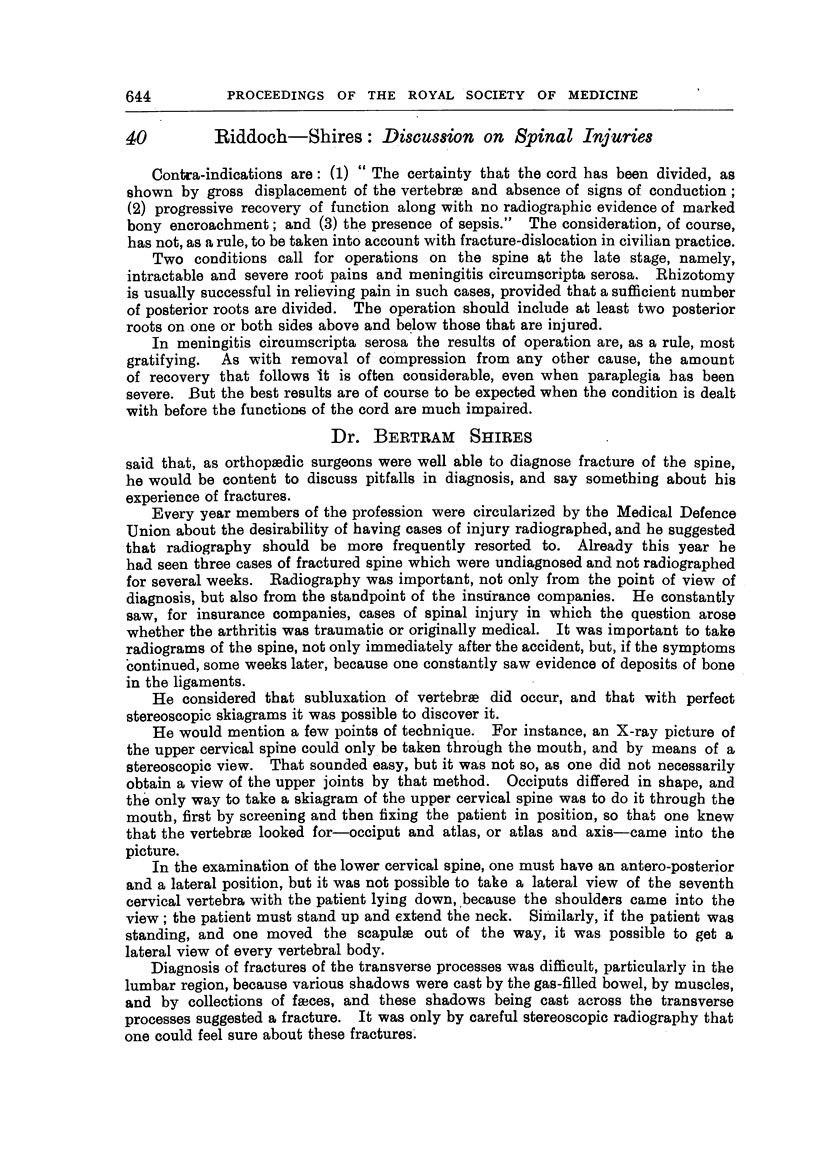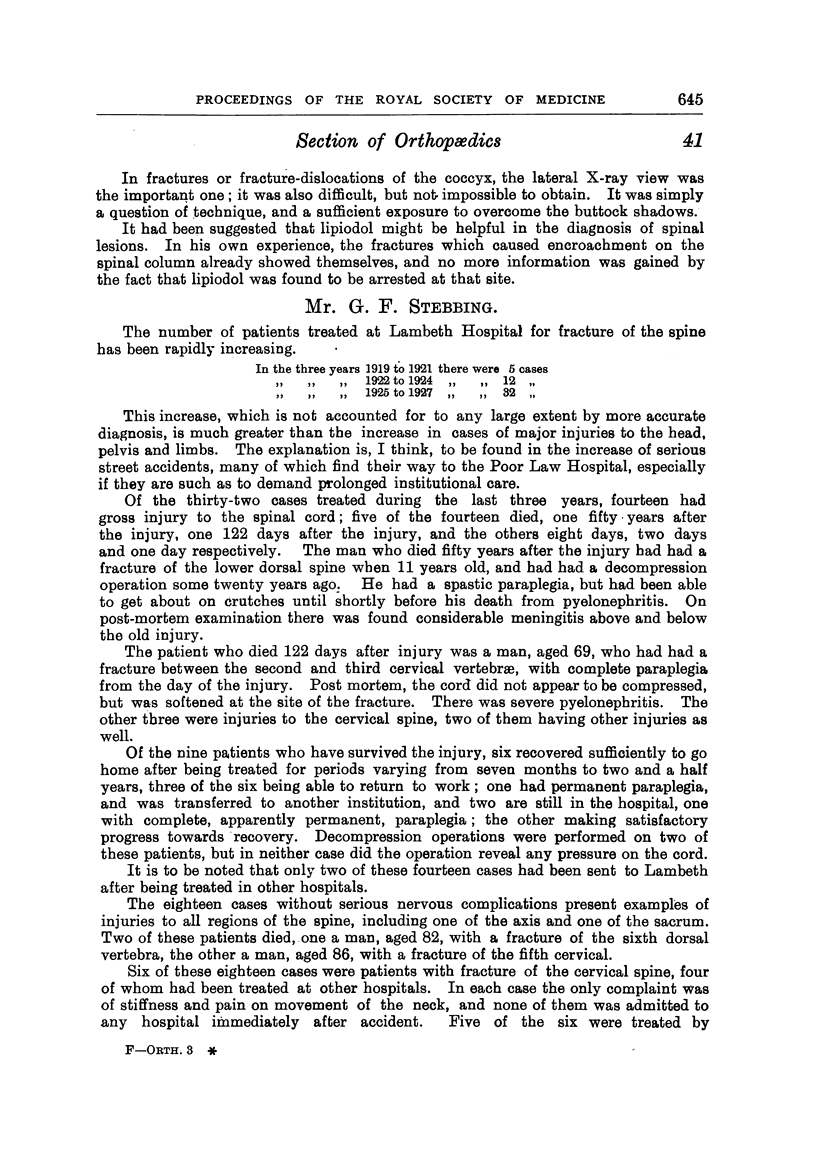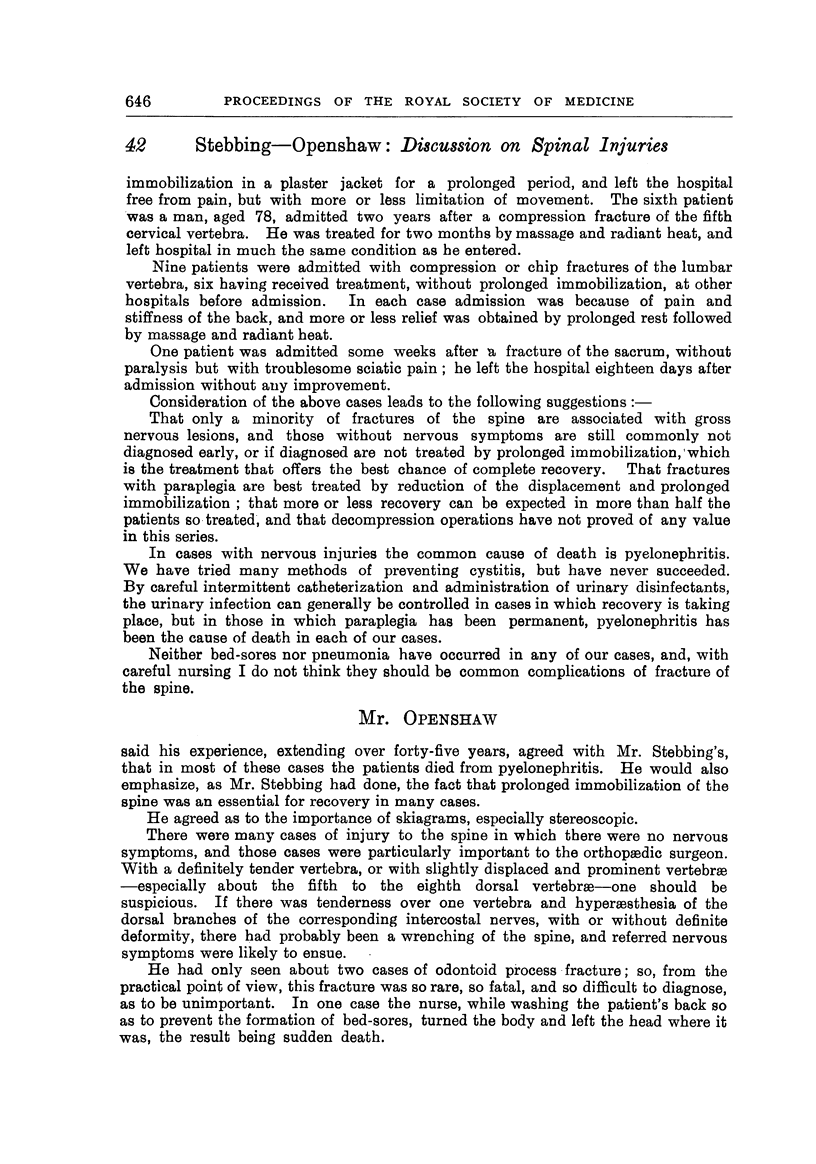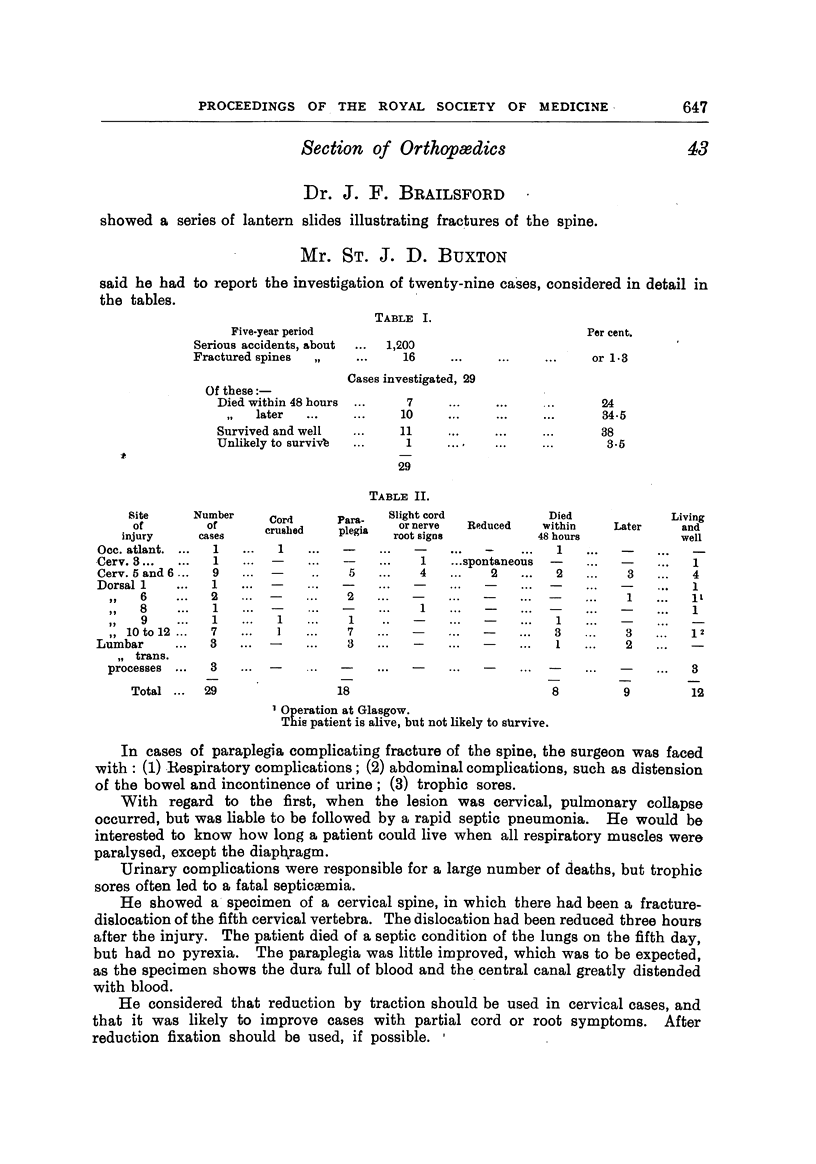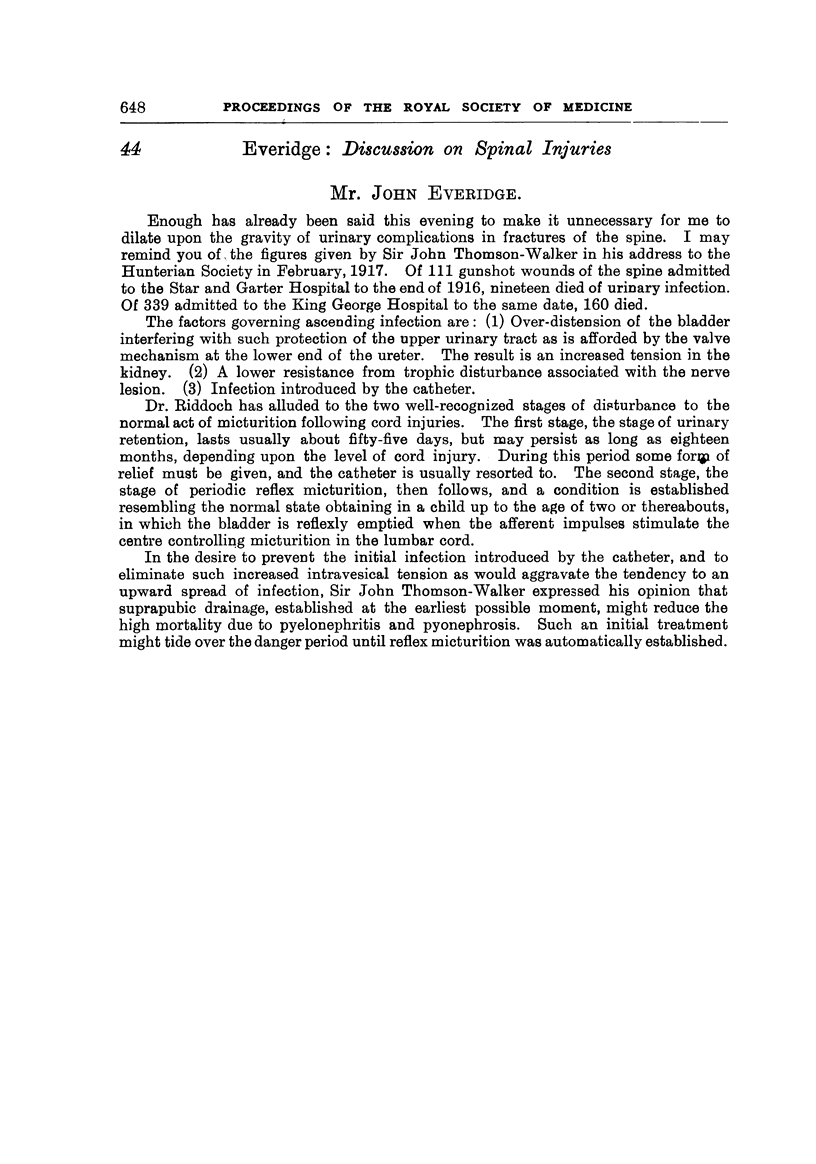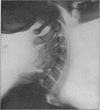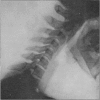Abstract
(1).—Varieties of spinal injuries, the three groups of common usage: fractures, dislocations, fracture-dislocations. Shall not refer in detail to fractures of the spinous or transverse processes.
(2) Mechanics of injury to vertebræ. Two variables: (1) the nature of the bones; (2) the qualities of the force. Spinal injury usually caused by indirect violence.
(3) The different results of injuries applied to the head; may break skull, failing that, the neck. Atlas fracture. Difference in qualities of the force causing atlas fracture and low cervical dislocation.
(4) The compound nature of the vertebral body. The two columns, anterior, spongy; posterior, compact. The nature of wedge-compression of the vertebral body. Variations in the shape of the wedge. Reasons. Occur at all levels, including cervical spine.
(5) Frequency of injury at different levels of vertebral column. “Localization” of injury. The two places of the graph of injury. The cervical at C. 5. Reason. The thoracic-lumbar peak at T. 12, L. 1 industrial. Is there a third peak at C. 2?
(6) The effects of violent flexion of the spine: cervical flexion causes luxation at C. 5 or so. Extension causes fracture of odontoid. Violent flexion and extension therefore cause injury at very different levels. Thoracic region, why is there no “peak” of injury at T.6, 7? Lumbar region.
(7) Displacement of fragments. Continuation of violence after the essential injury has been effected. Kümmell's disease, no inflammatory process involved.
(8) Injury to the intervertebral discs, essential for displacement. Imperfect rupture a cause for difficulty in reducing luxations. The worst cases those in which it is most easily done, but most of these have cord damage.
(9) Spinal injury from minimal violence. Examples of trivial cases, diving, brushing hair and so forth. Vertebral displacement in disease a much more serious thing.
(10) Curious stability of many cervical luxations. Reasons. Locking of the inferior zygaphophyses.
(11) Injury to nervous elements left principally to other speakers. Cord compression very rare. Immediate and irremediable damage. Root injuries. Falling mortality of modern statistics due to better diagnosis.
(12) Primary operation for fractures of spine relegated to oblivion. Rarity of indications for open operation. Reduction the best treatment.
Full text
PDF